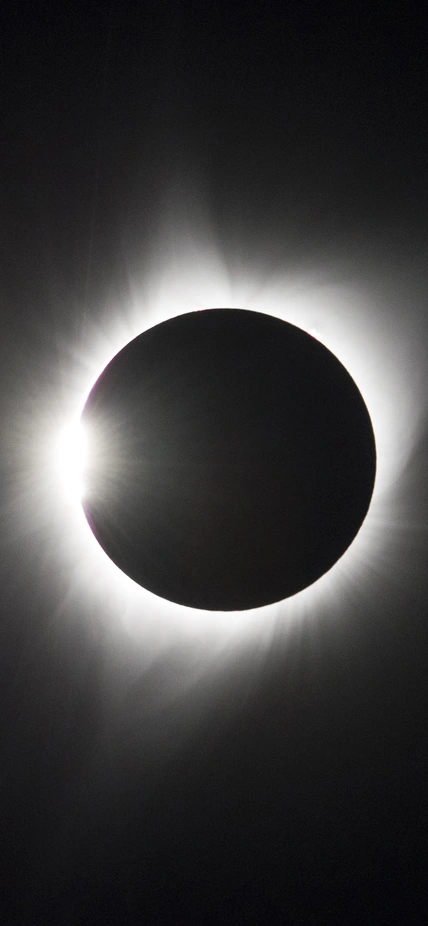This past August, people from Oregon to South Carolina had, what was for most of us, a once-in-a-lifetime experience witnessing the total eclipse of the Sun; other regions of the country witnessed a spectacular partial eclipse. I was heartened to see that millions of Americans of all ages and walks of life became increasingly excited as the spectacle approached.
The same scientific process of observation, analysis, deduction, and prediction that allowed us to know precisely when and where the eclipse would happen has been used to make predictions about the influence of climate change upon storm intensities. In the past weeks, the predictive power and value of science has been brought home once again in both arenas.
The eclipse raised the interest of many about the physics and mechanics of the Sun-Moon-Earth system, and how the Moon casts an umbral shadow in totality zones and partial shadows in flanking regions.
Staff at our Broad Branch Road campus celebrated by viewing the partial eclipse using eclipse glasses, a telescope, pinhole and colander projectors, and they monitored a live feed from a totality region. They listened to an eclipse playlist created by the Giant Magellan Telescope Organization.
As part of the surge in eclipse tourism, a number of Carnegie astronomers gathered at a school in Mackay, Idaho—located in the totality—to participate in engagement activities with teachers. Other Carnegie astronomers attended an event in western Montana.
Carnegie trustee Craig Barrett and his wife Barbara invited several friends of Carnegie and Carnegie scientists to their Triple Creek Ranch in Montana’s Bitterroot Mountain Range for the awe-inspiring event. I cohosted the trip with John Mulchaey, director of The Observatories, and accompanying Carnegie scientists infused the experience with the science behind the nature.
During the days leading up to the eclipse, guests enjoyed ranch activities, learned about the local ecology, and discovered fascinating information about local geology from Terrestrial Magnetism director Rick Carlson.
Carnegie’s Scott Sheppard oversaw a “star party.” Guests observed constellations and Saturn through a telescope. Juna Kollmeier gave an astronomy talk to help guests understand how the eclipse fits into the larger cosmos. These and other learning opportunities helped forge new friendships and gave guests a greater understanding of just how unique Carnegie Science is.
I had never seen a full eclipse and found it more impressive than I had expected. The weather was perfect that day, though forest fire smoke dimmed the sky in some areas. I do not think any of us will forget the eerie feeling as the birds started to sing night songs and the temperature suddenly plunged as darkness fell. It was truly an amazing, magical time—thanks to the warm and engaging Craig and Barbara Barrett, our consummate hosts.
This kind of immersion science instills the wonder of exploration like no other. We will offer other immersion occasions to our friends and supporters, each giving real-time experiences with different areas of Carnegie Science. The trips will showcase our extraordinary investigators, inspire with the thrill of discovery, and grow our circle of Carnegie friends.
Read more from the latest Carnegie Science newsletter!
